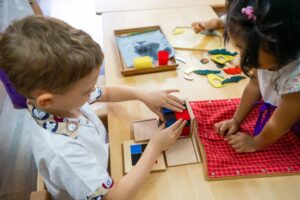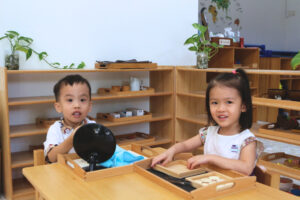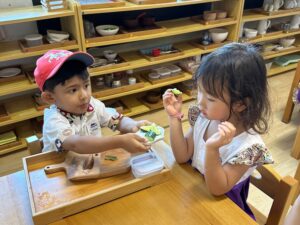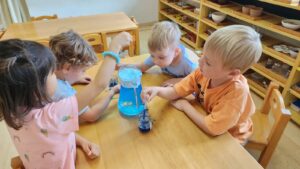Discover Tips to Support Your Child Through Daily Routines
Let’s be honest — mornings can be a rush, bedtimes can stretch forever, and in between it’s sometimes hard to tell what’s helping and what’s just adding to the chaos.
If you’ve ever felt like your days are running you instead of the other way around, you’re not alone.
At House on the Hill, we often speak with parents who are looking for ways to bring more calm, cooperation, and structure into daily life at home. The good news is, establishing and managing routines doesn’t have to be a rigid or overwhelming process. With a few small shifts — and a dose of patience — you can create a daily rhythm that not only reduces stress but supports your child’s wellbeing and independence
Why Routines Matter (Especially for Young Children)
Children thrive on predictability. Knowing what comes next gives them a sense of control, builds confidence, and makes transitions smoother — whether it’s getting out the door in the morning or winding down at night.
For parents, routines provide a helpful framework. When everyone knows the flow of the day, there’s less negotiating, fewer surprises — and more time for connection.
How does House on the Hill Support Routines at School?
At House on the Hill, it’s crucial that our teachers have a good sense of routine and how that routine benefits children. Research has shown the importance of routines and evidence linking routines to positive developmental outcomes in children.
Routines play a key role in supporting learning and development for children at House on the Hill. Our teachers use structured yet flexible daily schedules to help children feel secure while fostering independence.
Routines also provide rich learning opportunities. Through simple, repeated activities like circle time or snack prep, children practice:
- Sequencing and following an ordered set of steps
- Counting and making simple calculations
- Recognising cause and effect
- Using new language and vocabulary
👉 Read more on how routines support learning at House on the Hill
5 Ways to Support Daily Routines at Home
Here are five simple ways you can support routines at home and create a calmer family rhythm.
1. Start with Small Wins
If the idea of planning your whole day feels like too much, that’s okay. Begin with one part of the day that’s often tricky — like mornings or bedtime — and try building a consistent routine around that.
It might look like:
- A simple morning checklist with pictures for your child to follow
- A five-minute tidy-up after dinner every evening
- A wind-down routine with the same three calming activities before bed
Consistency is more important than perfection. Even simple steps done the same way every day can make a big difference.
2. Invite Your Child Into the Process
One of the most empowering things you can do is involve your child in creating the routine. Ask questions like:
“What helps you feel ready for school in the morning?”
“Which book should we read before bed tonight?”
Giving your child a voice helps them feel like a partner, not just a passenger. When they understand why routines are in place — and feel some ownership — they’re more likely to cooperate (and even remind you what’s next!).
3. Tackle Bedtime Battles with Connection
Bedtime can feel like a marathon — especially when everyone’s tired. If your evenings often involve resistance, stalling, or endless requests for water and one more story, you’re not alone.
A calming and predictable bedtime routine helps signal to your child that it’s time to slow down. You might try:
- A warm bath or shower
- Brushing teeth together
- Choosing a book
- A cuddle and lights out at the same time each night
If your child struggles with separation or winding down, try spending a few quiet moments together before the bedtime routine starts — talking about their day, listening to a story, or just sitting together. That connection can go a long way.
4. Build Healthy Habits Into the Everyday
We all want our children to eat well, move their bodies, and rest enough — but it doesn’t have to be a separate checklist. The beauty of a routine is that these habits can become just part of the flow.
Try incorporating:
- A consistent mealtime together (with your child helping to prep or serve)
- Outdoor play or nature walks in the afternoon
- Screen-free time before bed
- A regular wake-up and sleep time — even on weekends
Children learn by doing, and the more these habits are built into the rhythm of the day, the more naturally they’ll take them on.
5. Create a Home Environment That Supports Calm
It’s not just what we do — but how we do it. The atmosphere at home plays a big part in how routines unfold.
Some small things that can make a big difference:
- Keeping key areas (like the entryway or bedroom) tidy and simple
- Offering limited choices (“Would you like the red cup or the blue one?”)
- Speaking calmly, even during tense moments
- Keeping visual cues around to help children remember what comes next
You don’t need a Pinterest-perfect setup — just a space that feels safe, clear, and positive.
Quick Tips for Managing Daily Routines at Home
Start with one routine at a time
Focus on improving just one part of the day (like mornings or bedtime) before tackling everything at once.
Keep routines visual
Use picture charts, checklists, or simple drawings to help your child understand and follow the steps.
Use consistent cues
Play a certain song for clean-up time or dim the lights before bedtime — these small signals help children transition.
Offer limited choices
Instead of asking what they want to wear, try “Do you want the blue shirt or the green one?” It builds independence without overwhelm.
Keep transitions calm
Give your child a gentle heads-up before moving on: “In 5 minutes, it’ll be time to pack away and get ready for lunch.”
Stick to regular mealtimes and bedtimes
Even on weekends! A predictable body clock helps regulate emotions and energy levels.
Celebrate small wins
Acknowledge effort, not perfection. “I saw how you put your toys back without being asked — that was really responsible.”
Be kind to yourself
Some days won’t go to plan — and that’s okay. Routines are a guide, not a rulebook.
Create a Personalised Montessori Daily Routine Card
Want to empower your child to do their daily routine? Try our Montessori at Home activity card, showing you how to make a personalised daily Montessori routine card and then how to use it.
Click here to make your personalised routine card with your child.
You’re Not Alone
Daily routines aren’t about control — they’re about creating moments of calm, confidence, and connection. As your child learns what to expect and gains independence, you’ll likely find more peace in your own day too.
At House on the Hill, we’re here to support you — whether you’re just starting out or adjusting to your child’s new stage of development
Browse our Parent Blog for more helpful resources, or reach out to our school Principals for support tailored to your family.








